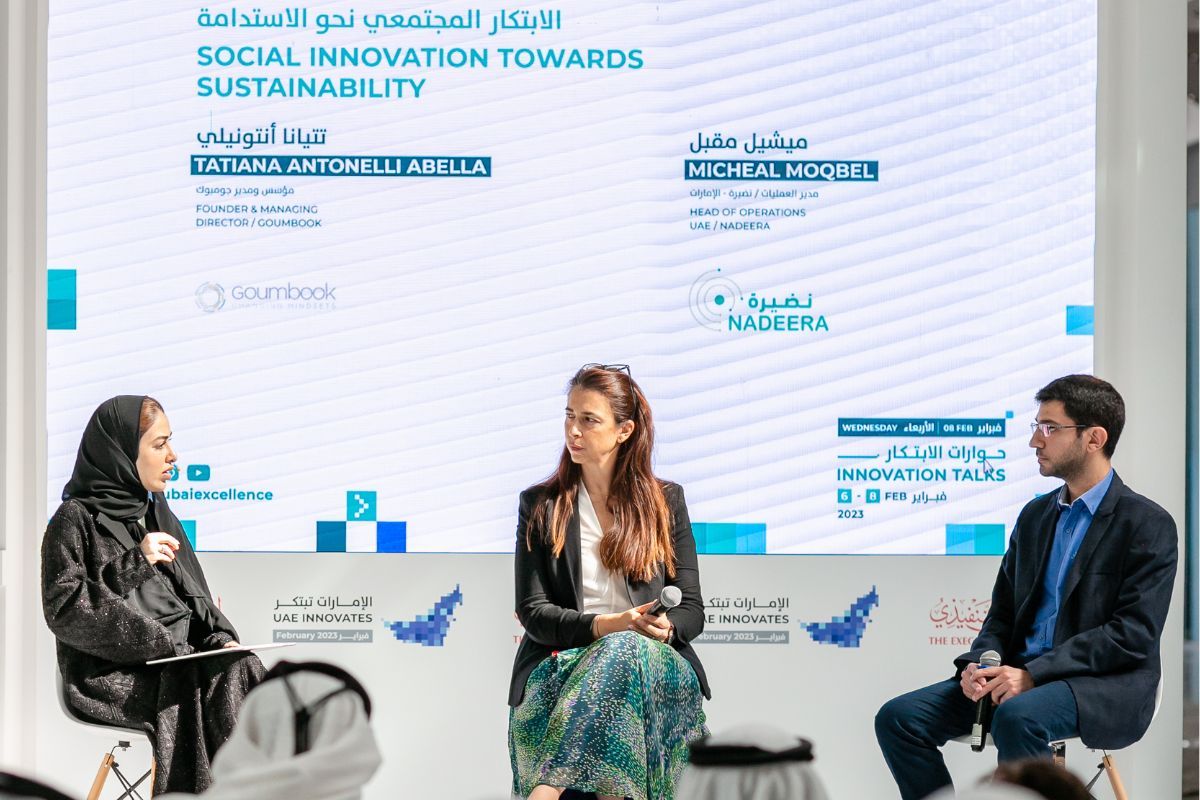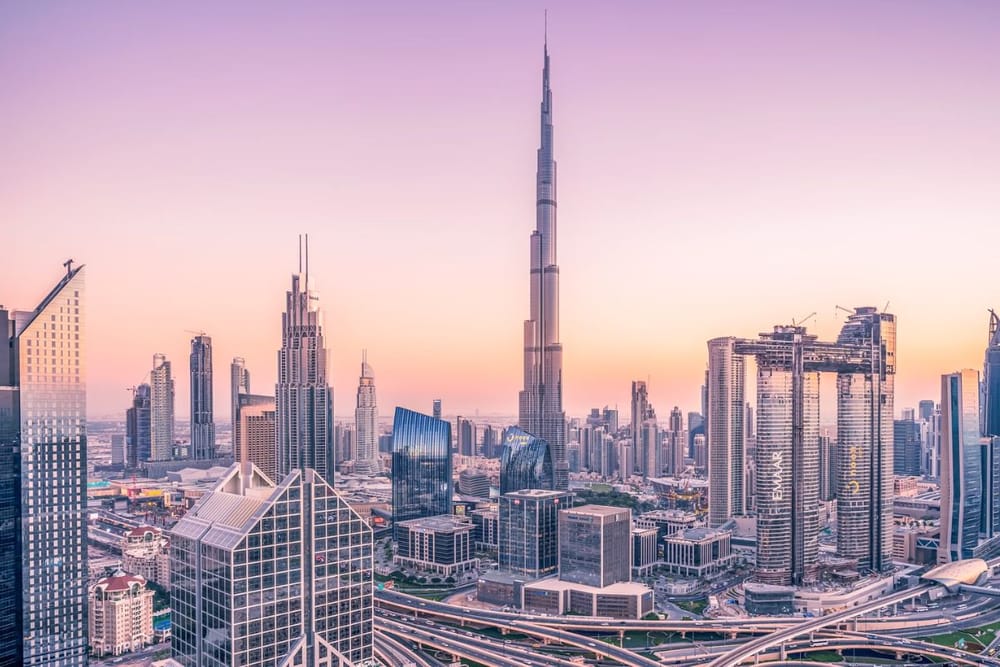The history of Dubai's architecture is a fascinating journey through time, reflecting the Emirate's rapid transformation from a modest fishing village to a dazzling metropolis. This architectural evolution mirrors Dubai's socio-economic growth and its emergence as a global city.
In its early days, Dubai's architecture was influenced by traditional Arab and Islamic designs, characterized by wind towers (Barajeel), which provided natural cooling in the harsh desert climate. The buildings were primarily constructed from coral, mud, palm wood, and gypsum, adapting to the local environment and resources.
As Dubai began to prosper from the pearl trade in the late 19th and early 20th centuries, its architecture started to evolve. The introduction of electricity, air conditioning, and modern construction materials in the mid-20th century marked a significant shift. This period saw the blending of traditional Arab architectural elements with modern Western styles.
The discovery of oil in the 1960s catapulted Dubai into a new era of wealth and development. This period witnessed a construction boom, with the cityscape rapidly transforming with modern high-rises, luxurious hotels, and innovative structures. A desire for grandeur and innovation characterized Dubai's architecture during this phase, often pushing the boundaries of architectural design.
The turn of the 21st century marked another evolution in Dubai's architectural history. The city became synonymous with ambitious, futuristic projects like the Burj Khalifa, the world's tallest building, and the Palm Islands, a series of massive artificial archipelagos. This era is defined by a fusion of cutting-edge technology, sustainable practices, and a continued blend of cultural influences, making Dubai's architecture a testament to its bold vision and unyielding ambition.
Today, Dubai's architectural landscape reflects its multicultural population and its status as a global hub for business, tourism, and innovation. This journey from traditional structures to modern marvels continues to shape Dubai's identity and its place on the world stage.
Architectural History
Dubai's architectural history reflects its transformation from a small fishing and pearling village to a global metropolis. Here's a detailed look into the evolution of Dubai's architecture:
Early Beginnings (Before the 20th Century)
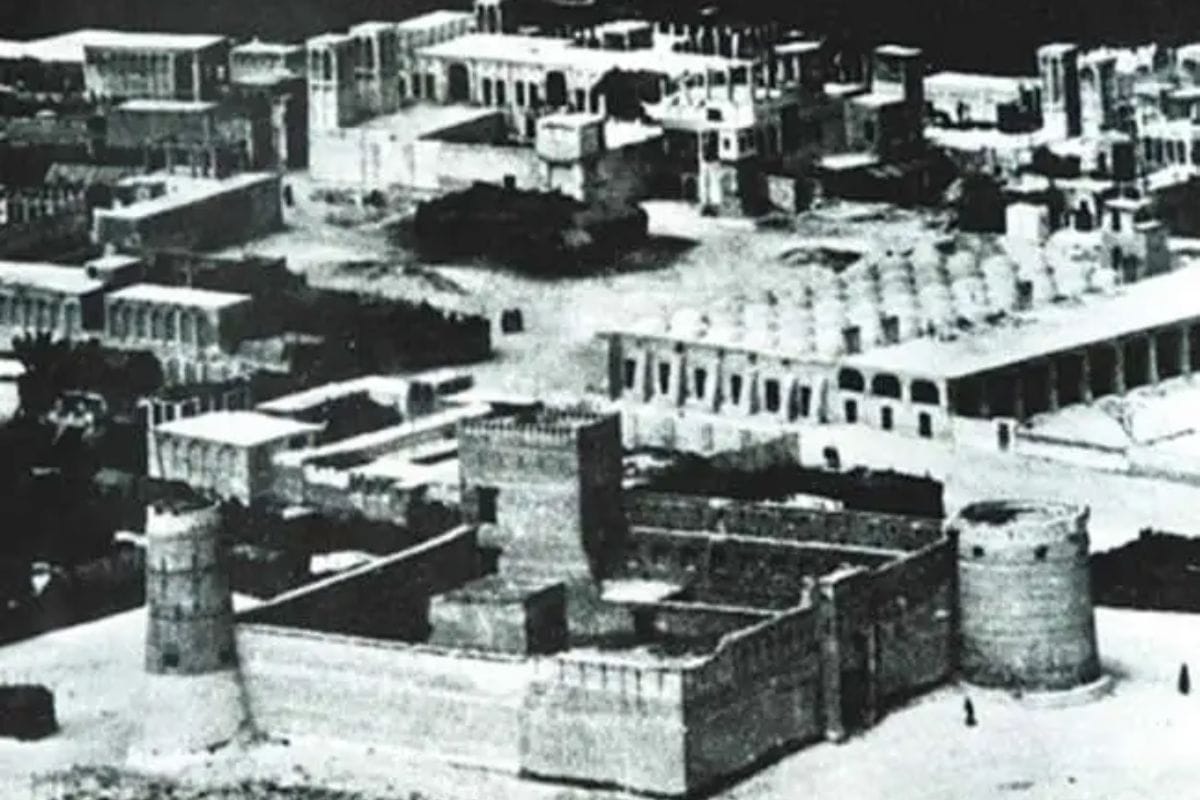
In its nascent stages, Dubai's architecture was primarily functional, and tailored to the challenging desert environment. The buildings were constructed using locally sourced materials like palm fronds for roofing, mud for walls, and coral stone for more permanent structures. These early buildings often featured courtyards and wind towers, known as Barajeel, which served as natural cooling systems in the hot climate. Islamic and Arabian cultural influences were predominant, evident in the mosques and marketplaces central to community life. This period of architecture was marked by simplicity and practicality, with a strong emphasis on adapting to the local environment.
Pearl Trade Era (Early 20th Century)
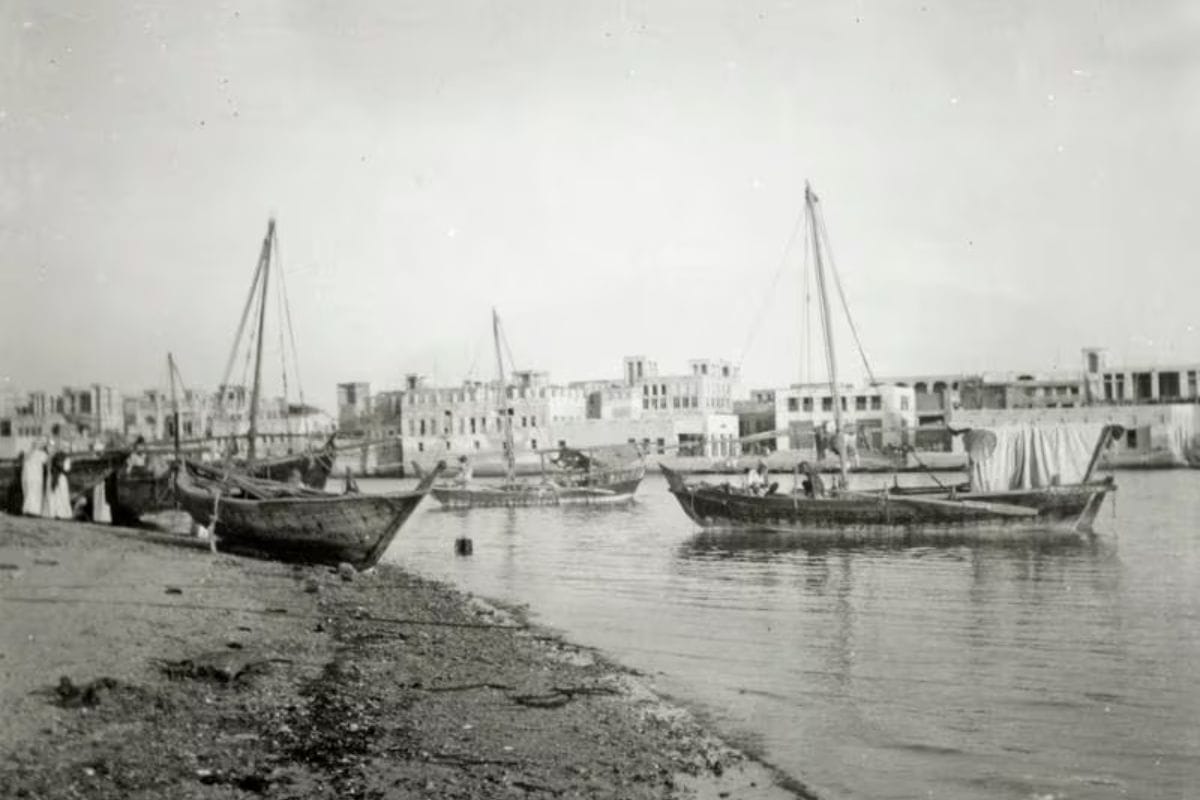
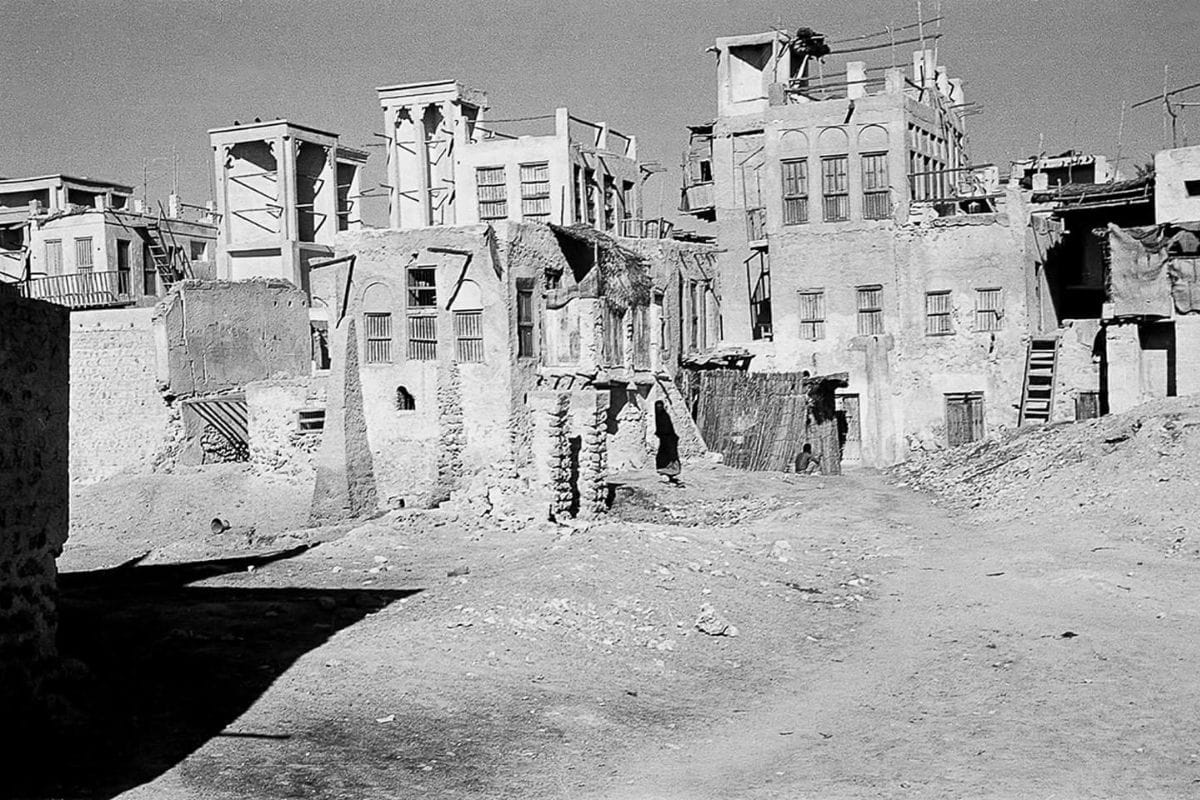
The flourishing pearl trade in the early 20th century ushered in a period of prosperity for Dubai, which was reflected in its architecture. During this era, the city saw the construction of more elaborate and durable buildings using coral stone, supported by wooden poles and adorned with intricate gypsum decorations. This was a time when Dubai's architecture began to absorb influences from foreign traders and visitors, leading to a gradual shift from purely traditional designs towards a blend of local and external architectural styles. The pearl trade era established Dubai's transition towards more sophisticated and diverse architectural designs.
Post-Oil Discovery (1960s Onwards)
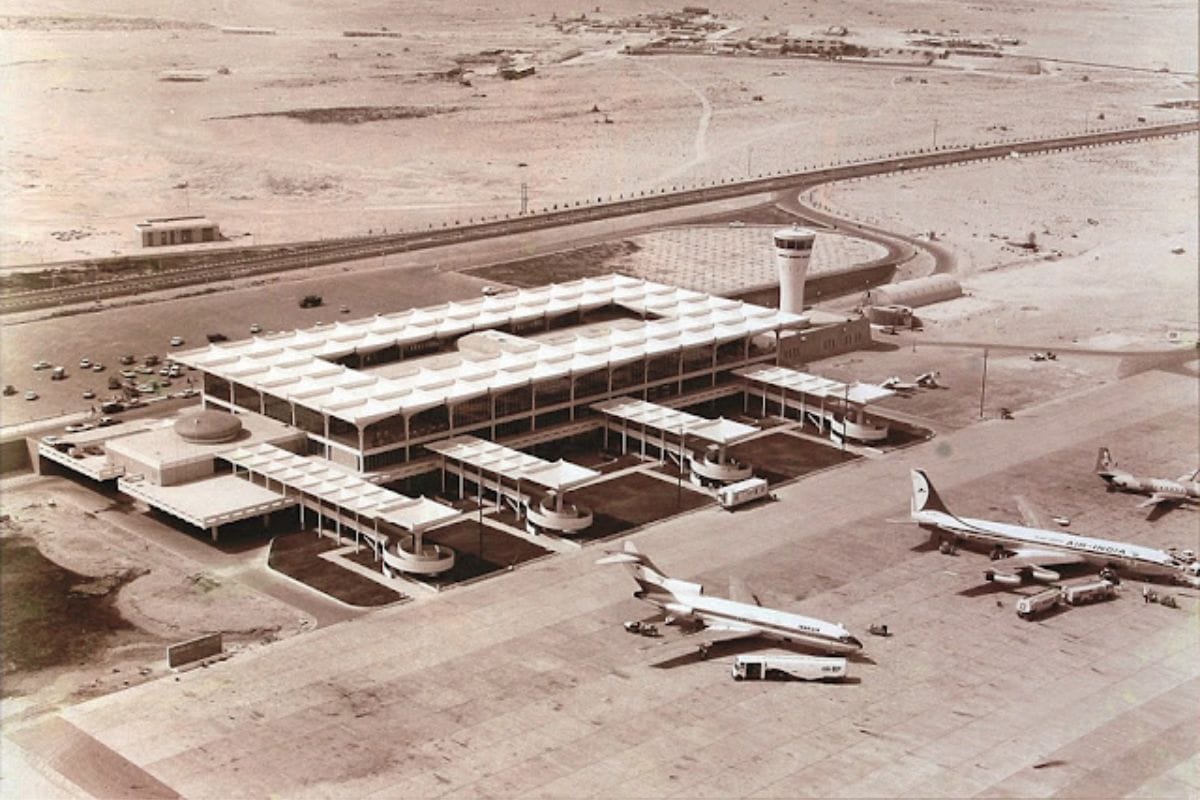
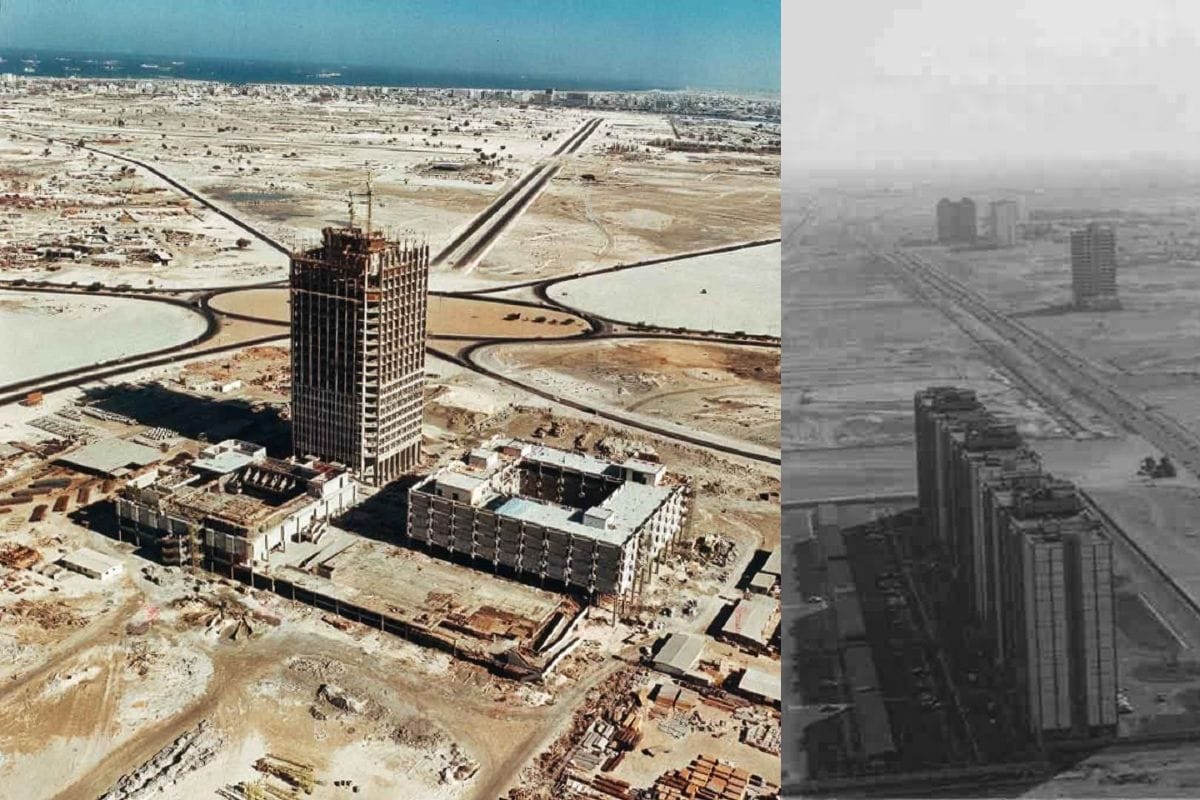
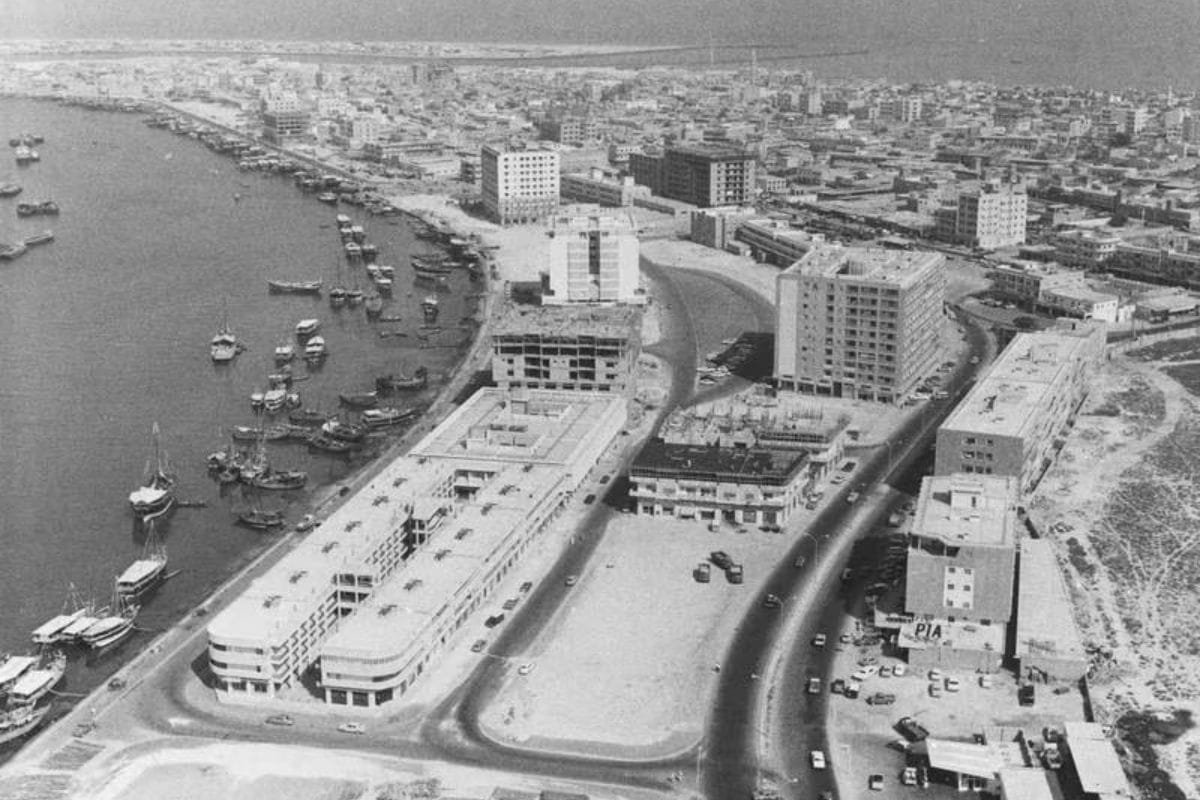
The discovery of oil in the 1960s marked a transformative era in Dubai's history, leading to rapid modernization and urbanization. This wealth influx led to a significant shift in architecture, with traditional Arabian designs giving way to modernist and international styles. The introduction of air conditioning and modern construction materials such as concrete and glass facilitated the rise of high-rise buildings, dramatically altering the city's skyline. This period also saw significant investment in infrastructure, including roads and ports, further propelling Dubai into the modern age.
Late 20th Century to Early 21st Century

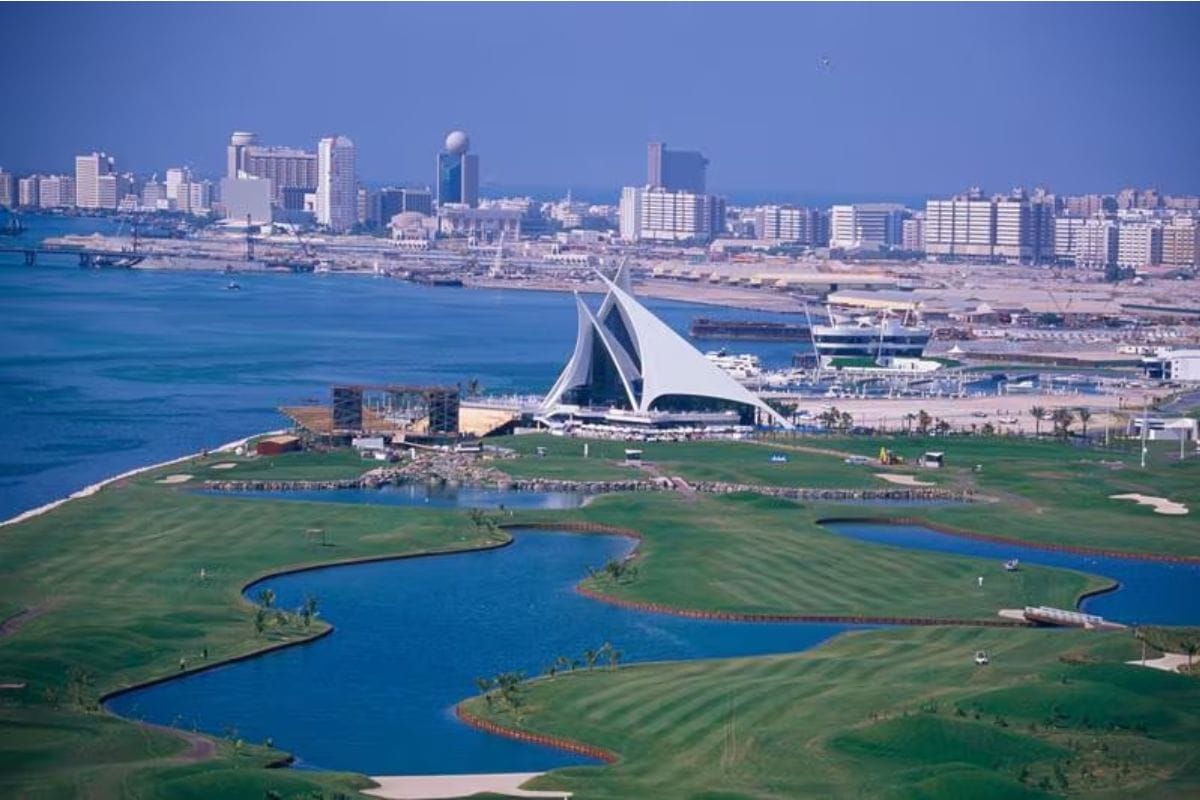
By the late 20th century, Dubai had evolved into a global architectural hub, attracting world-renowned architects and giving rise to a skyline replete with unique and innovative structures. Iconic landmarks such as the Burj Al Arab, opened in 1999, epitomized Dubai’s penchant for luxury and architectural ambition. This era underscored Dubai's growing status as a centre for architectural innovation and luxury.
Read More: Burj al Arab Dubai - Explore the Luxury Hotel in Dubai
21st Century and Beyond
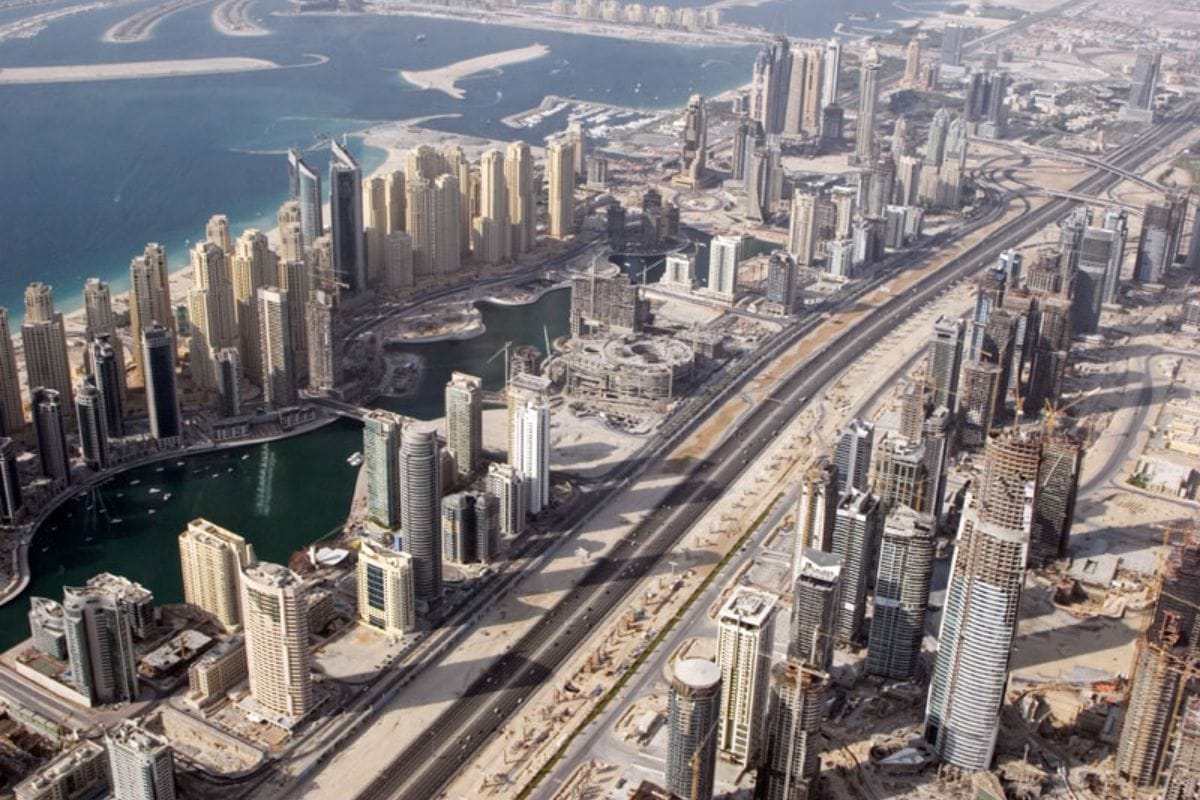
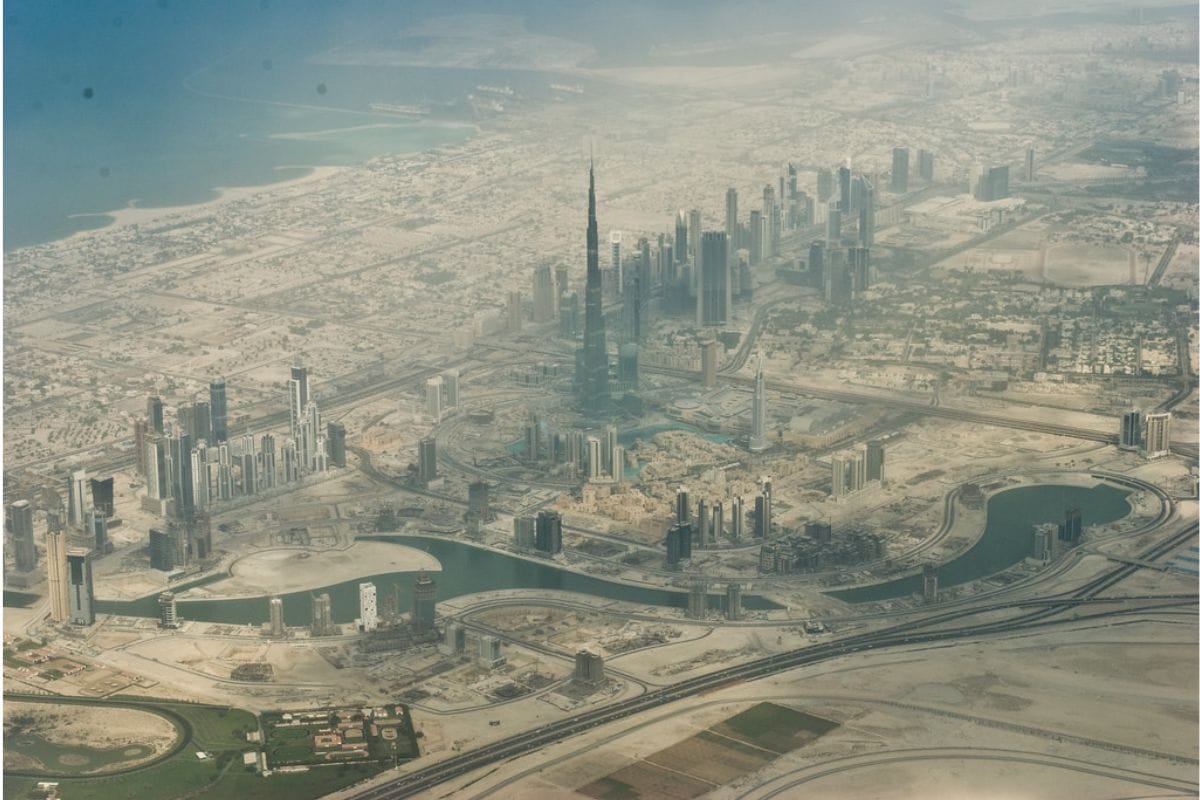
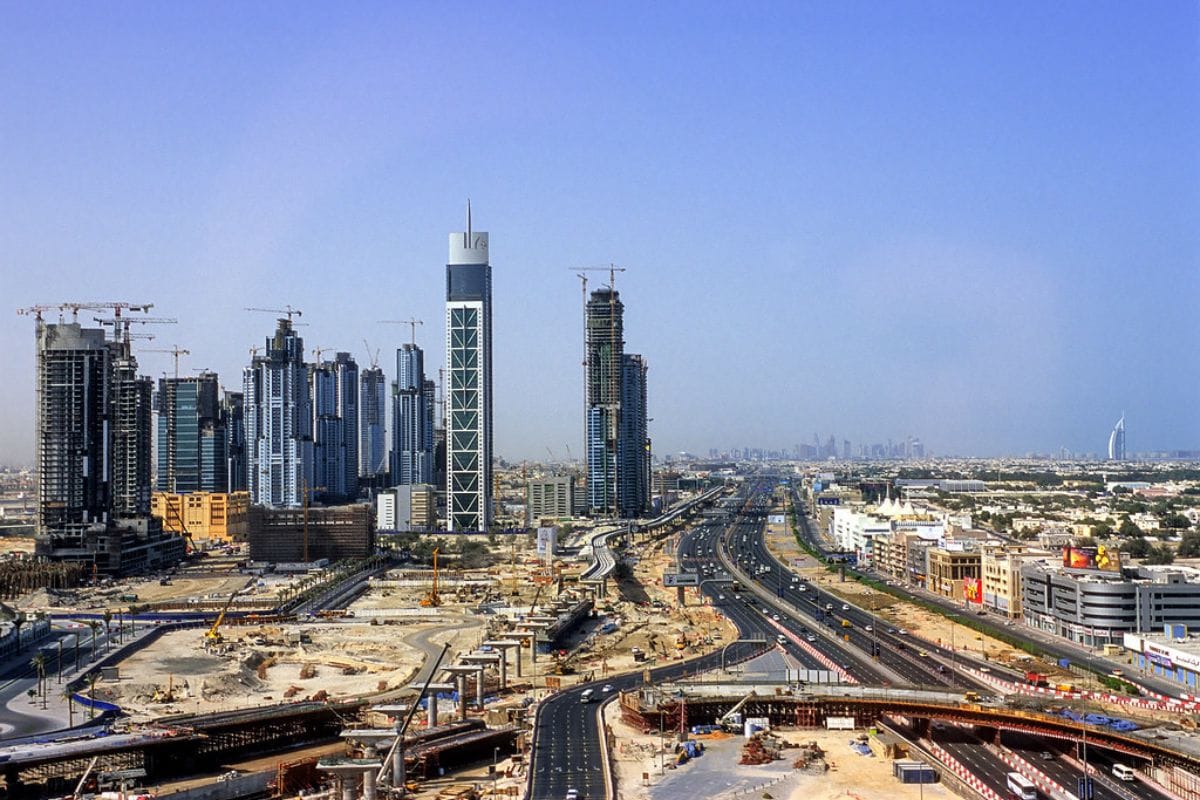
The 21st century marked the zenith of Dubai's architectural ambition with the completion of the Burj Khalifa in 2010, the tallest building in the world. This era also saw a shift towards sustainable and smart architecture, with an emphasis on integrating green spaces and eco-friendly materials into new projects. Additionally, there has been a resurgence in interest in traditional architectural elements and Arabesque designs, as seen in projects like Madinat Jumeirah, which reflect traditional Arabian townscapes.
Iconic Architectural Marvels
Museum of The Future
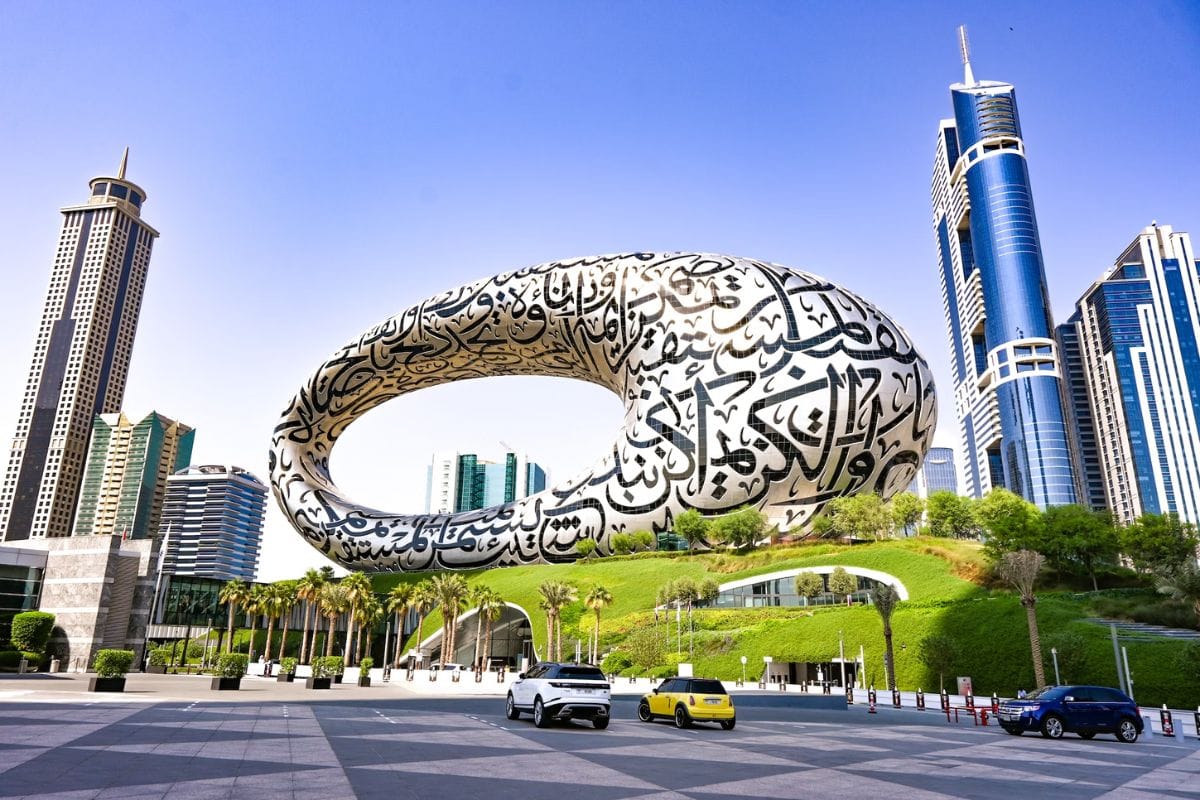
Designed by South African architect Shaun Killa, this museum is a masterpiece of modern architecture, combining Arabic calligraphy with a symbolic contemporary design. Its stainless-steel facade features poetry in calligraphy, and the circular building represents humanity and the earth, while the void symbolizes the unknown future. Opened in 2022, it spans seven floors and showcases themes like space exploration and artificial intelligence.
Burj Khalifa

Standing at 2,716 feet, the Burj Khalifa is the world's tallest tower and a centrepiece of Dubai's skyline. Designed by American architect Adrian Smith, it's an abstraction of traditional Islamic architecture. The tower, opened in 2010, cost $1.5 billion and took six years to construct. It's now a major tourist attraction and a hub for dining and nightlife.
The Opus by Omniyat
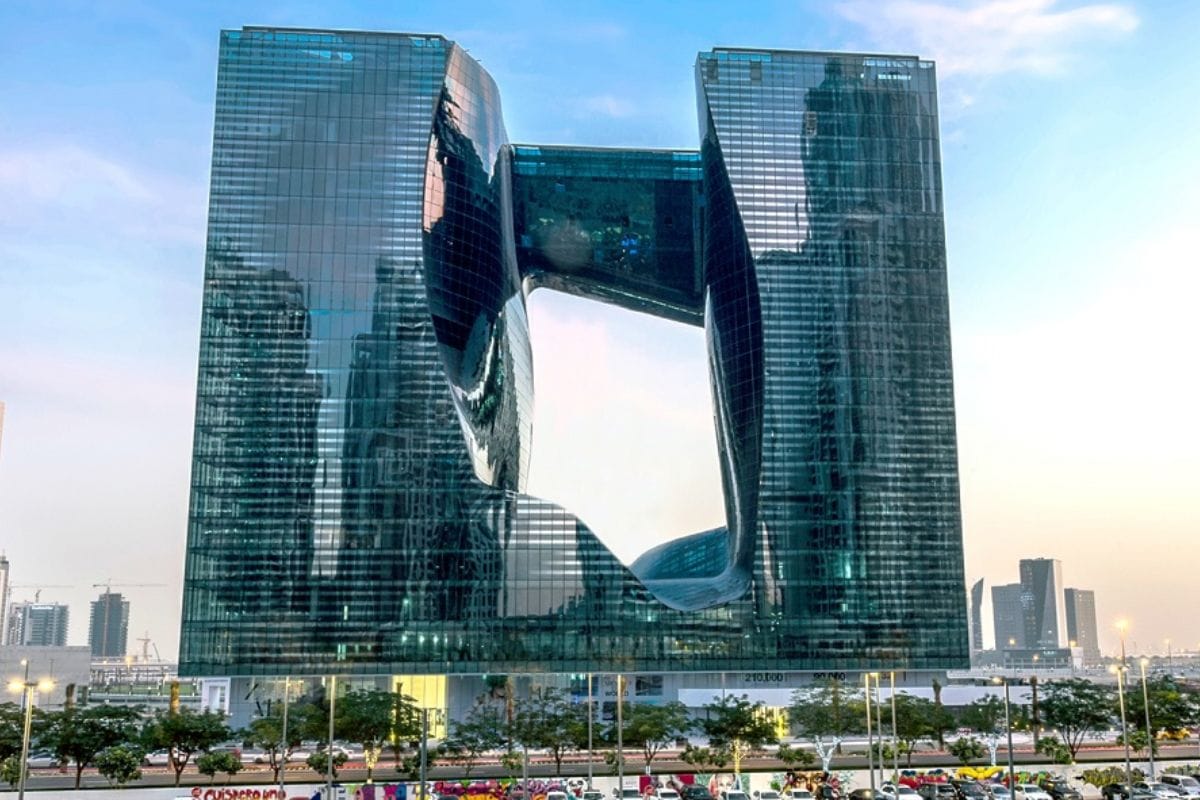
Designed by the late Iraqi-born British architect Zaha Hadid, The Opus is a mixed-use structure featuring two towers that converge to form a glass cube. This building is notable for its asymmetrical steel and glass bridge and a free-flowing void over eight floors, offering a visually captivating experience.
Burj Al Arab

This iconic sail-shaped structure stands on a man-made island off the Jumeirah coast. Inspired by the sail of a dhow, the hotel was designed by Tom Wright and opened in 1999. Known for its luxury, including 24-karat gold interiors and marble floors, it has become a symbol of Dubai's extravagance.
Atlantis, The Royal

Located on Palm Jumeirah island, this hotel, designed by Kohn Pedersen Fox Associates, features a modernist architecture reminiscent of interlocking Legos. The structure comprises six towers linked by a sky bridge, offering stunning sunset views and a range of luxurious amenities.
Cayan Tower

Known for its unique twisting structure, this skyscraper achieves its rotating appearance by rotating each floor plate 1.2 degrees around a cylindrical core, cumulating in a 90-degree rotation from bottom to top. This design makes Cayan Tower a distinctive feature of Dubai's skyline.
Future Concepts
Dubai's future architecture promises groundbreaking projects that redefine the limits of design and functionality:
Moon Resort

The Moon Resort, co-founded by Sandra G. Matthews and Michael R. Henderson, is a $5 billion project proposed by Moon World Resorts Inc. It's an over 200-meter tall structure with a 198-meter sphere diameter, designed to replicate a lunar experience. The resort, expected to be completed within 48 months and open by 2027, will be LEED Gold five-star standard and feature 4,000 luxury resort suites, including 300 private boutique residences. The structure's carbon fibre composite material will resemble the moon's surface, incorporating solar cells for power. It will offer a lunar experience with zero-gravity simulation and allow visitors to suit up as astronauts.
The Loop

Proposed by architecture studio Urb, The Loop is a 93-kilometre-long covered highway for cyclists and pedestrians, designed to encourage healthier modes of transportation and incorporate a hyperloop line. It aims to make Dubai the most connected city by foot or bike. The structure will feature a glazed tube with a kinetic floor generating energy, a climate-controlled environment, and connections to leisure and wellness facilities. The Loop is part of a broader project to make Dubai a 20-minute city.
Symbiotic Towers
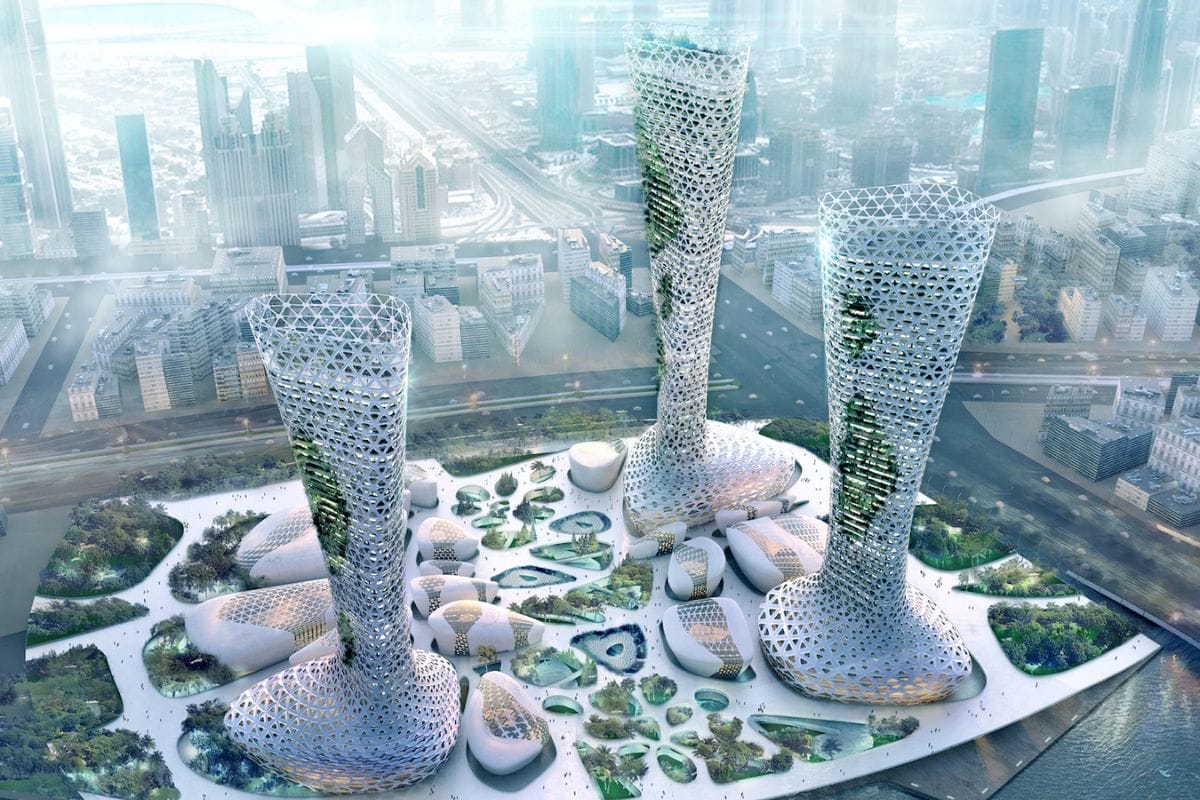
AmorphouStudio's Symbiotic Towers in Jumeirah Gardens consist of a residential, hotel, and office tower, linked by a double-deck pedestrian shopping plaza. The project integrates Dubai's natural landscape into its design, creating two micro-climatic zones. The Lower Deck is a green oasis for gatherings, while the Upper Plaza connects to the lower level via ramps and features photovoltaic umbrellas for power. The towers' design responds to Dubai's climate, with the form and orientation shaped by radiation data to minimize exposure to high radiation.
Sandstorm Absorbent Skyscraper

Designed by Kalbod Design Studio, this project involves 25 towers along Dubai's main route, aimed at addressing sandstorms. The towers will have deep cavities using magnetism to absorb soil particles. Sand batteries will be installed to store energy for the towers and neighbouring buildings. The project aims to create a multi-functional area centred on scientific research, with zones for residential use and various research institutes.
Each of these projects showcases Dubai's innovative approach to architecture, blending sustainability, technology, and luxury to create a futuristic urban landscape.
This exploration of Dubai's modern architectural history reveals a city that has dramatically transformed its skyline and urban fabric. From its traditional beginnings to the futuristic visions currently in the pipeline, Dubai has consistently pushed the boundaries of architectural design.
Its journey is a narrative of innovation, ambition, and a bold leap into the future, making it a unique and influential player in the global architectural landscape.
Also Read:


